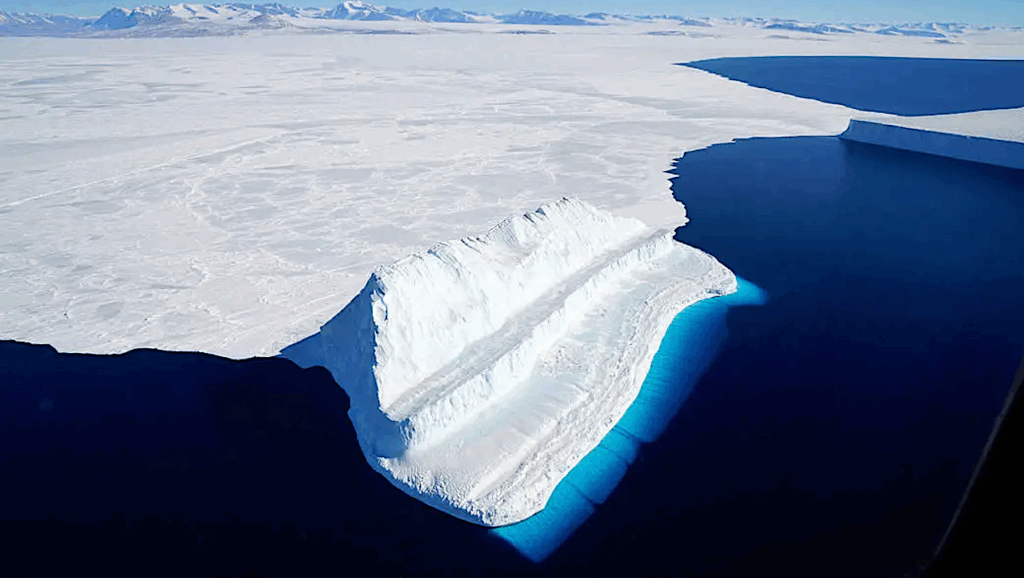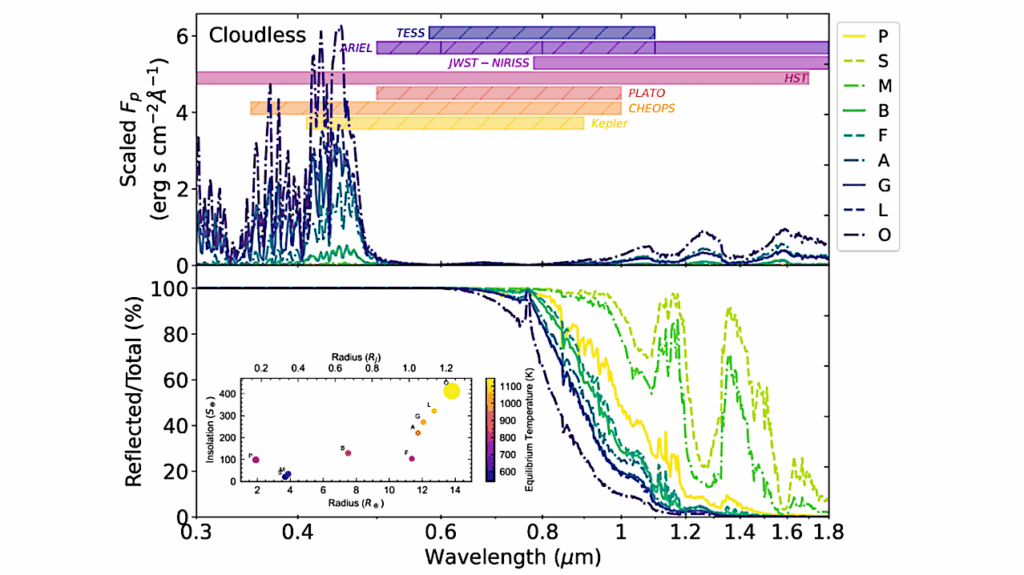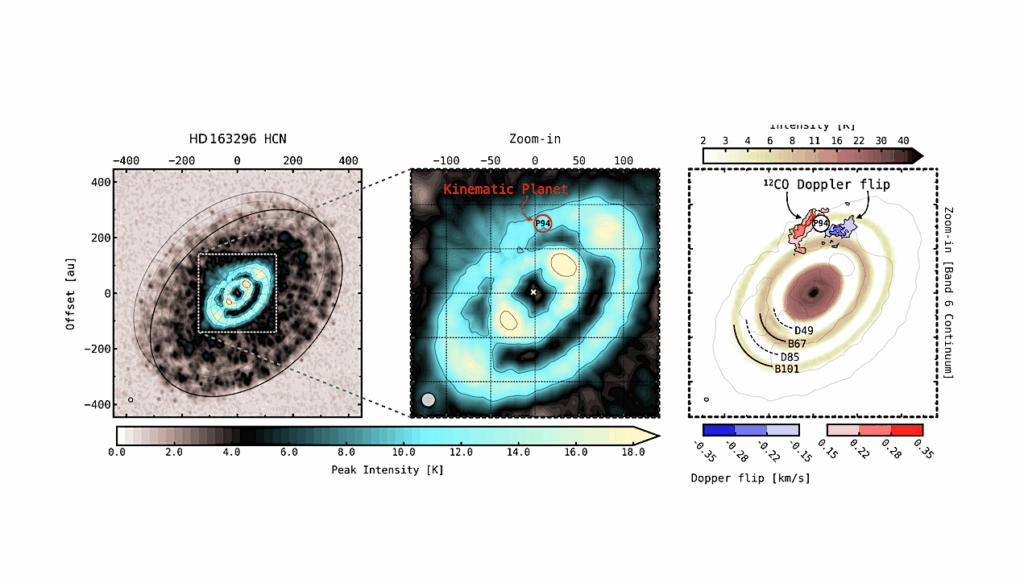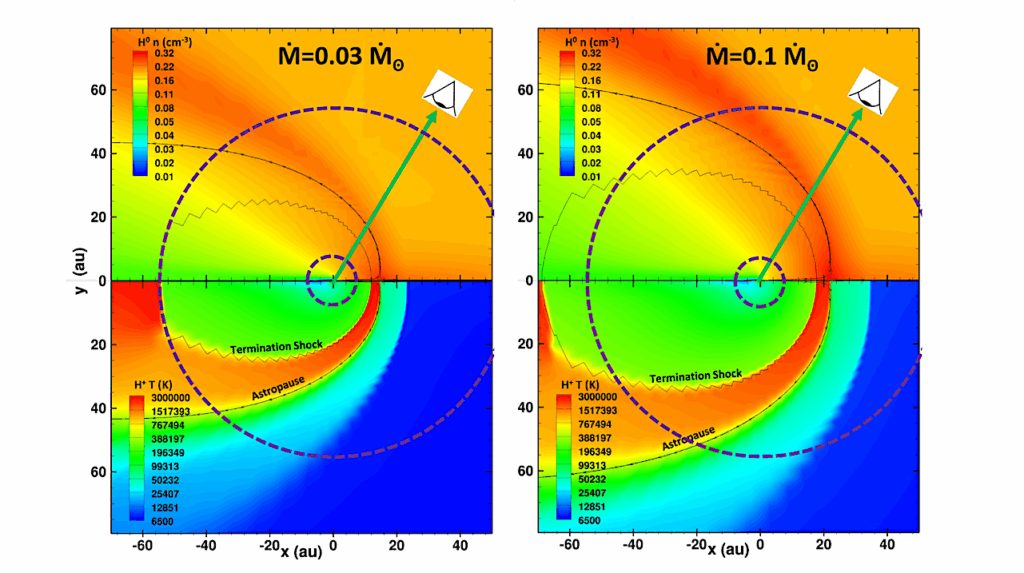Tentative Evidence for Water Vapor in the Atmosphere of the Neptune-Size Exoplanet HD 106315 c

We present a transmission spectrum for the Neptune-size exoplanet HD 106315 c from optical to infrared wavelengths based on transit observations from the Hubble Space Telescope/Wide Field Camera 3, K2, and Spitzer.
The spectrum shows tentative evidence for a water absorption feature in the 1.1−1.7μm wavelength range with a small amplitude of 30 ppm (corresponding to just 0.8±0.04 atmospheric scale heights). Based on an atmospheric retrieval analysis, the presence of water vapor is tentatively favored with a Bayes factor of 1.7 – 2.6 (depending on prior assumptions).
The spectrum is most consistent with either enhanced metallicity, high altitude condensates, or both. Cloud-free solar composition atmospheres are ruled out at >5σ confidence. We compare the spectrum to grids of cloudy and hazy forward models and find that the spectrum is fit well by models with moderate cloud lofting or haze formation efficiency, over a wide range of metallicities (1−100× solar).
We combine the constraints on the envelope composition with an interior structure model and estimate that the core mass fraction is ≳0.3. With a bulk composition reminiscent of that of Neptune and an orbital distance of 0.15 AU, HD 106315 c hints that planets may form out of broadly similar material and arrive at vastly different orbits later in their evolution.
Laura Kreidberg, Paul Mollière, Ian J.M. Crossfield, Daniel P. Thorngren, Yui Kawashima, Caroline V. Morley, Björn Benneke, Thomas Mikal-Evans, David Berardo, Molly Kosiarek, Varoujan Gorjian, David R. Ciardi, Jessie L. Christiansen, Diana Dragomir, Courtney D. Dressing, Jonathan J. Fortney, Benjamin J. Fulton, Thomas P. Greene, Kevin K. Hardegree-Ullman, Andrew W. Howard, Steve B. Howell, Howard Isaacson, Jessica E. Krick, John H. Livingston, Joshua D. Lothringer, Farisa Y. Morales, Erik A Petigura, Joseph E. Rodriguez, Joshua E. Schlieder, Lauren M. Weiss
Comments: Submitted to AAS journals; 19 pages, 12 figures
Subjects: Earth and Planetary Astrophysics (astro-ph.EP)
Cite as: arXiv:2006.07444 [astro-ph.EP] (or arXiv:2006.07444v1 [astro-ph.EP] for this version)
Submission history
From: Laura Kreidberg
[v1] Fri, 12 Jun 2020 19:53:53 UTC (1,933 KB)
https://arxiv.org/abs/2006.07444
Astrobiology, Astrochemistry








